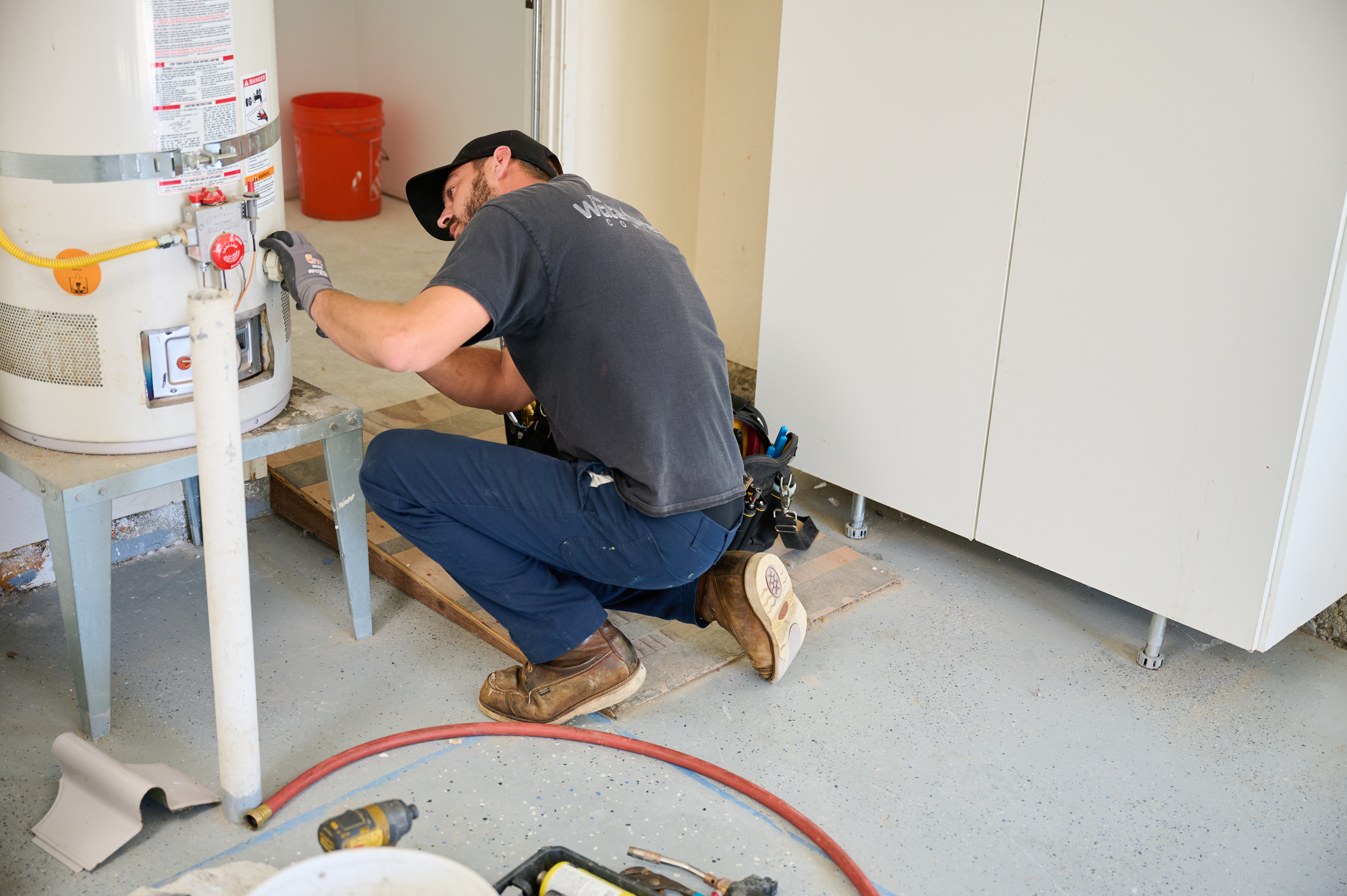
Tankless water heater costs depend on the size of your water heater, location, fuel type, and more. Keep reading to calculate your expenses.
If you want to keep the pressure low, call a pro


If you’re standing in your bathroom waiting for hot water, it may not be that your hot water heater isn’t heating fast enough. Remember, there are gallons of water running through the pipes between your faucet or shower and your water heater. All this cold water needs to go somewhere, and that doesn’t mean down your drain.
Looking for a proper solution? A hot water recirculation system using a pump can fix this problem, providing you with hot water seemingly on demand. If you’re a handy homeowner, you can learn how to install a recirculating pump on a water heater on your own.
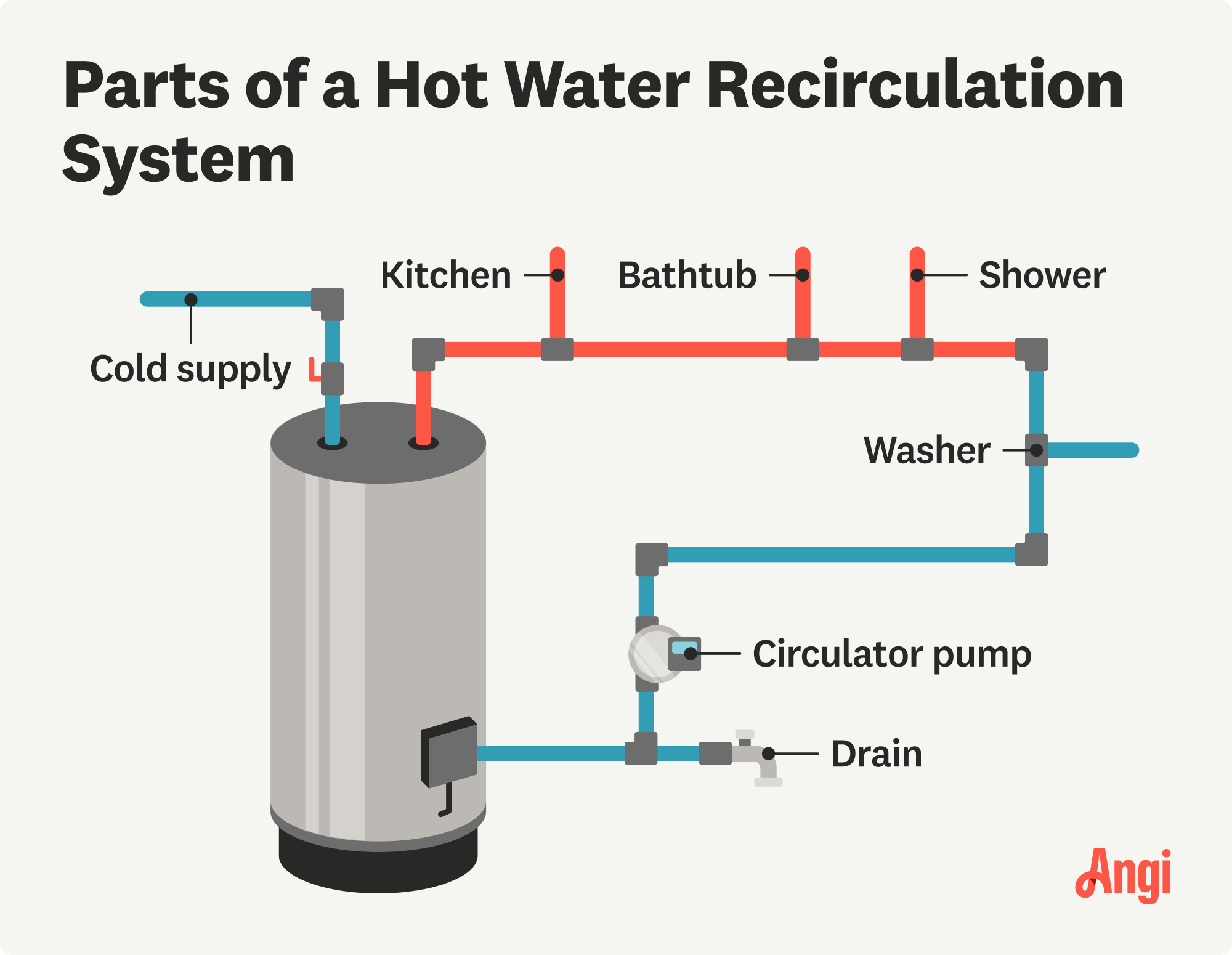
A critical first step when installing a recirculating pump is making sure the water is off, the pipes are empty, and there is no power in the room where you’ll be installing the pump. Electricity and water don’t mix, so make sure the breaker is firmly off before starting any work.
There should be two large handles near your water heater—these close the water lines. Make sure both are off. Finally, to empty the pipes, simply run a sink until it sputters out and no more water flows.
There should be a valve or faucet near the bottom of your water heater tank. You can either attach a hose and run it down a drain or use a large bucket. We recommend the first method, as water is heavy, and using a hose saves you a lot of time and elbow grease. Empty the water heater tank completely before moving to the next step.

While you can certainly just grab a pipe and determine its temperature, the good news is that they are often colored—blue is cold, and red is hot. In most water heaters, these will come out of the top of the heater.
Remember that tankless heaters shouldn’t use a recirculating pump, so if you discover you can’t find the water tank, you may not have one. If you aren’t sure which type of tank you have, call a water heater pro or the manufacturer (if you can see a make and model on the heater).
Pipes are connected at junctions and involve threaded nuts sealed with Teflon tape. They are not easy to disassemble, especially older pipes and sealants. It’s critical to double-check that your water is fully off before continuing.
You’ll need to measure the length of the pump and the valves that attach to it. These valves, called check valves, prevent backflow. Once you have that measurement—and have checked it twice—you need to locate the pipe section where you’ll install the recirculating pump. This is often on top of the tank, attached to the hot water line.
You will need to use a saw to make room for the pump and cut the existing water pipe. However, you may not need to do this if flexible hoses are installed or if space exists between pipe junctions that are close enough in size to the pump and valves that you could simply swap them.
When this step is complete, you’ll have a gap in the system. That’s where the pump goes.

Check valves, also known as backflow preventers, prevent water from flowing the wrong way in a system. You’ll need to make sure there are two installed—one on either side of the recirculating pump. Without these valves, water could flow back into the pump, rendering it useless and possibly causing damage.
Your pump goes in the empty gap between your water tank’s hot water line and the hot water line that connects to your home’s plumbing. There are a few ways to attach it, but the best way is to use flexible hoses.
There are two reasons for this: they allow movement in the system, which can help prevent burst pipes, and they are much easier to install and remove than cutting a solid pipe. Remember that every junction nut or screw requires sealing with Teflon tape.
Turn on the circuit breaker and water supply. When you flick on the power, make sure there is no standing water. The tank wasn’t heating water while you were doing the work, so it may take time for your home’s water to heat back up.
Plug in the circulator but don’t turn it on just yet. You need to prime the pump with water. Different models have different instructions—some are even automatic.
When your pump is plugged in and primed, you can turn it on. Wait an hour before testing it, but monitor it while you wait. Make sure there are no small leaks occurring anywhere in the system. Once your water has heated up, and you’re positive everything is connected correctly, go to the furthest sink or shower and test your new system.
There are a lot of steps in this project, all of which can lead to problems if not done properly. Here are some mistakes you should avoid:
Not measuring twice: You don’t want to cut a section of pipe only to realize you cut it too short and need to replace it.
Using the wrong pump: Not all homes have the same plumbing needs. Picking the pump with the appropriate power is crucial to its efficacy.
Not monitoring leaks for long enough: If you think you’re sure, make sure again. You don’t want to wake up to a flooded basement or damage to your plumbing.
Forgetting check valves: These are small but important and are a requirement that ensures your water only flows one way.
We consider this project fairly challenging for the average DIYer. Those with plumbing experience will find it manageable, but there are too many points of error, with too large of consequences, to tackle this if you’re unsure. It’s best to call a local water heater repair pro to tackle this job. The good news? It won’t take them long, so installation shouldn’t cost much more than the parts.
From average costs to expert advice, get all the answers you need to get your job done.

Tankless water heater costs depend on the size of your water heater, location, fuel type, and more. Keep reading to calculate your expenses.
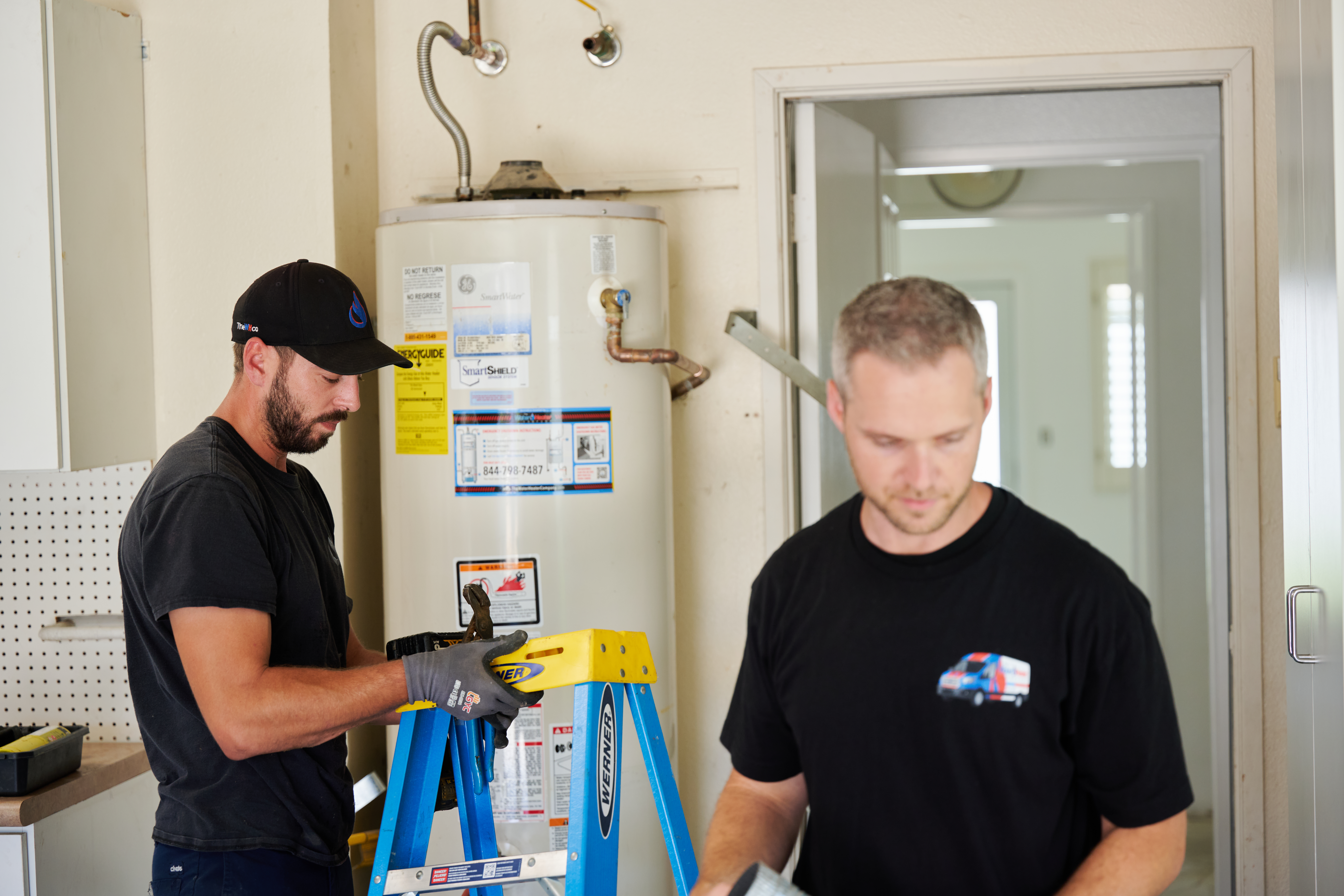
Learn about the different factors that go into water heater gas valve replacement costs to see if you should DIY the project or call a pro.

While solar water heater costs are a bit higher than a standard system, this energy-saving option could pay for itself in a few years. Here’s what you need to know.
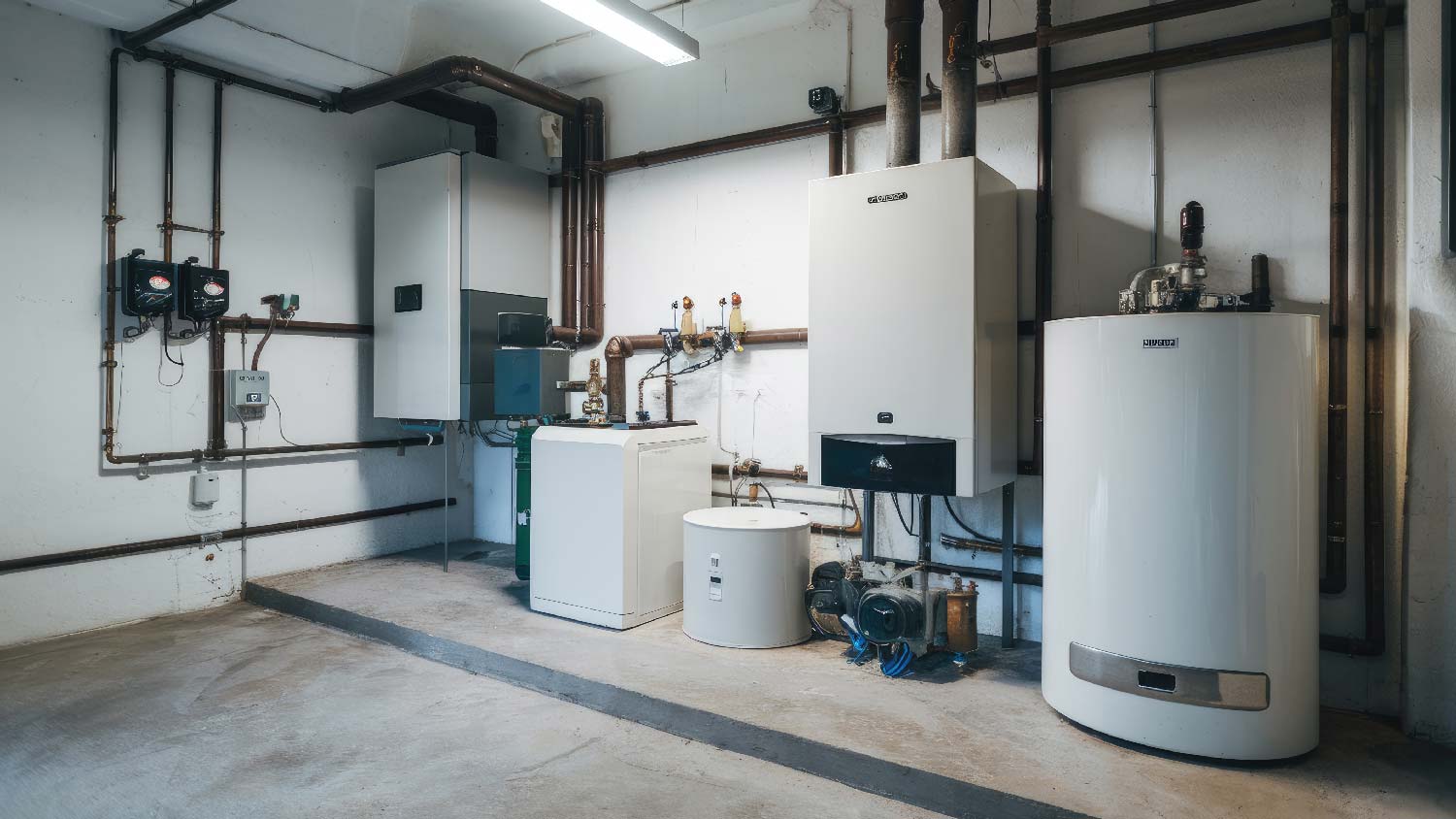
Do water heater blankets work, or are they just hype? Find out the energy-savings truth behind this addition and whether it's worth it.
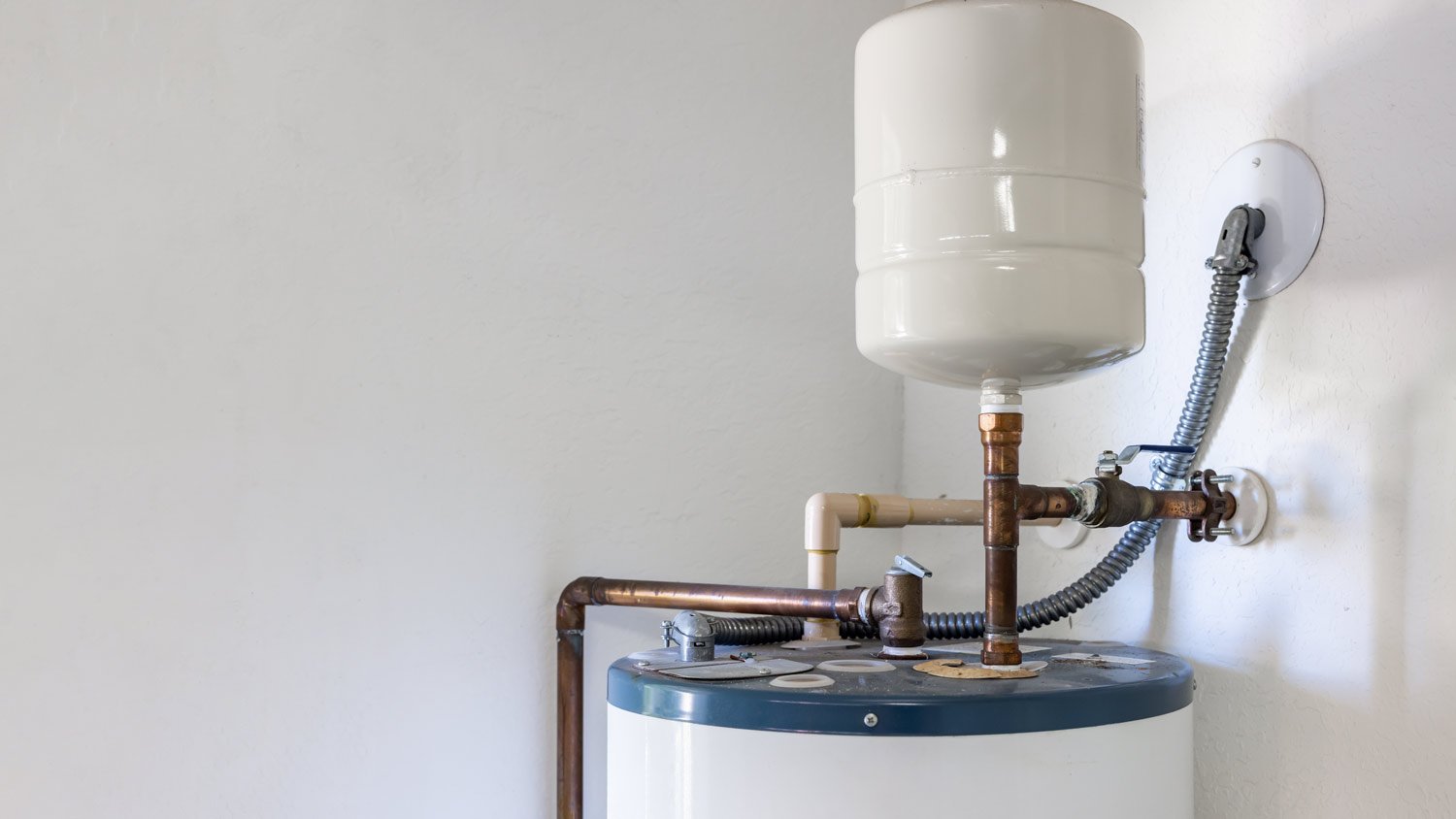
Water heater tank expansion installation diagrams can be helpful to have on hand whether you’re replacing an old unit or installing a new one.

Does your water heater always turn off? Here’s how to diagnose the problem.